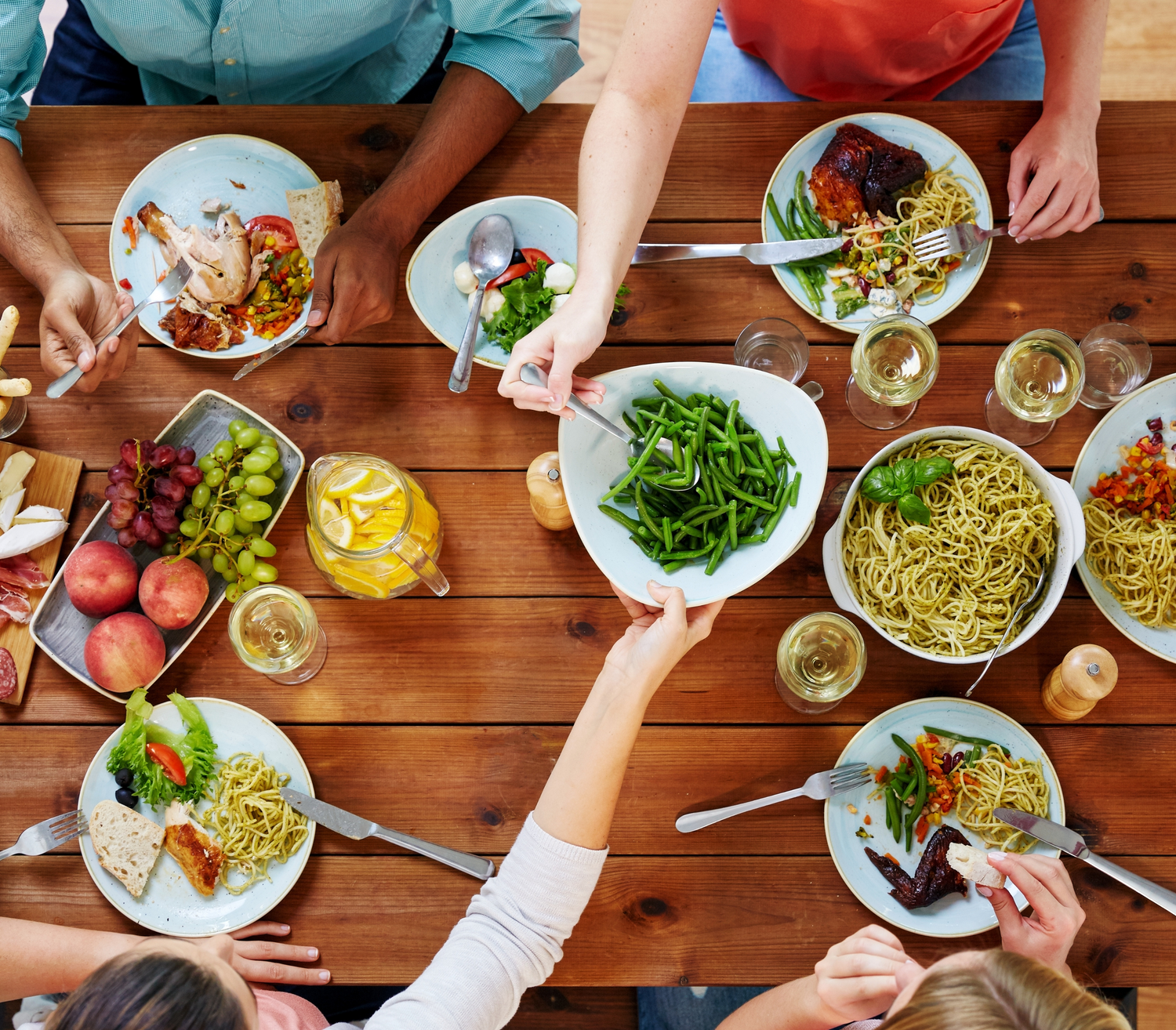The basic human need to eat has, in recent times, become a rather confusing and widely bewildering topic. This is likely attributed to the rhetoric (often misguided) around the foods we ‘should’ or ‘should not’ be eating and the modern diet culture that has been further exacerbated with social media.
This can, at best, leave us a bit puzzled about what to eat, but at worst create ill-founded beliefs and negative labels around certain foods. It’s therefore no wonder that we might often feel woefully dissociated with the plate in front of us. Added to that when we do finally get our head around deciding what to eat, with all of the stress and angst that involves, we may consume the food with barely any chewing action and often with multiple devices on the go.
It is our gut that can feel this the most. Digestive symptoms such as bloating, reflux, excessive gas, irregular bowel movements, and lack of satiety can be driven by simply not taking adequate time to ‘rest & digest’ irrespective of what we are actually eating. So, how can we be more present with our plate?
SET THE SCENE
Eating is a multi-sensory experience. Setting the scene for mealtimes can change our eating behaviours by encouraging us to take time over our food. Putting food on a plate sounds like an obvious one but this often doesn’t happen especially if we are buying food out. Transferring even a simple shop-bought sandwich onto a plate makes it feel more of a meal. Sitting down to eat at a table is also another way to be more present with our food. We can tend to snack mindlessly when standing up. Moreover, sitting at the table usually lends a more upright posture, rather than slouched over on the couch, which compromises optimum digestive processes.
Looking at our food rather than at phones and other such devices at mealtimes is something that many of us don’t seem to manage. How can we then expect to be present with the process of eating if we are busy checking emails or getting sucked into a WhatsApp chat? Removing ALL distractions such as phones, emails, TV and suchlike can have a marked impact on how we eat. You’ll become much more aware of flavours and textures as well as better tuning into satiety signals to know when you feel properly satisfied rather than wondering where the food suddenly went and having an uncomfortably full and bloated belly.
TAKE TIME TO CHEW
Believe it or not our gut starts in the mouth. Many of us forget that with adopting what might be described as an ‘inhale’ approach to our food! This is almost always due to being distracted by phones, emails etc (see previous point). However, lack of chewing, or mastication as its technically referred to, can create symptoms too. Roughly speaking we need to chew around 30 times per bite but don’t get caught up on the numbers as that’s just going to stress you out further. It is more about aiming to chew until we have a liquid mush before swallowing to give your gut less ‘work’ to do further down the chain.
Lack of chewing can create symptoms such as reflux, bloating and gas so a bit more time spent in the first part of digestion can help to alleviate some of these. Paying attention to the process of eating also has its stress-relieving benefits as it puts us into a state of mindfulness. As the famous Buddhist monk Thich Nhat Hanh said “Chew your food not your worries”.
REST & DIGEST
Let’s look at the concept of ‘rest & digest’. We need to be in this mode, i.e. the parasympathetic nervous system, for digestion to work optimally. Conversely when we are in ‘fight or flight’ mode this is essentially our ‘survival’ mode so digestion, at least from a nervous system perspective, is compromised. However, many of us eat meals perpetually in this latter mode, where we are stressed and anxious, which is likely to have an impact on our gut.
Eating in an environment that is conducive to this ‘rest & digest’ is therefore the aim. We can in fact, use mealtimes as pockets of recovery to help still the mind and focus on the process of eating as well as shifting the body into the parasympathetic nervous system and allow the gut to do its job properly. This can be a way of practising mindfulness and being present in the moment.
And remember that when you dine, you also dine with the trillions of microbes in your gut at every meal time, so taking a bit more time to sit, savour and sumptuously enjoy your food will help support their magical endeavours and support a healthier, happier gut overall.


